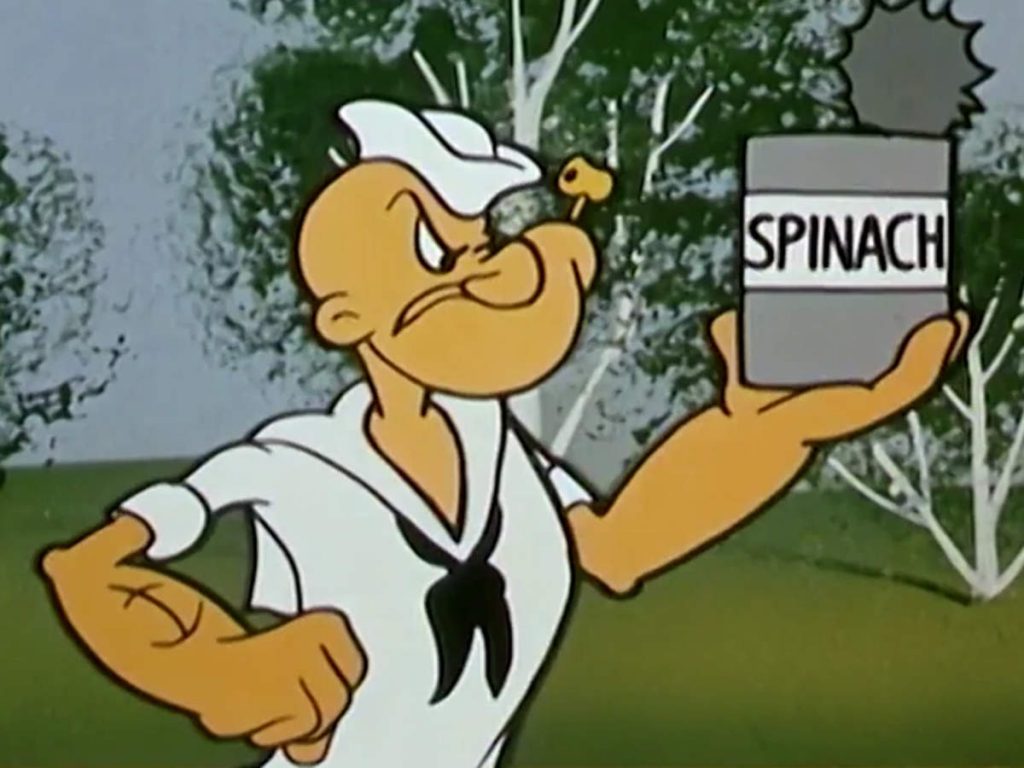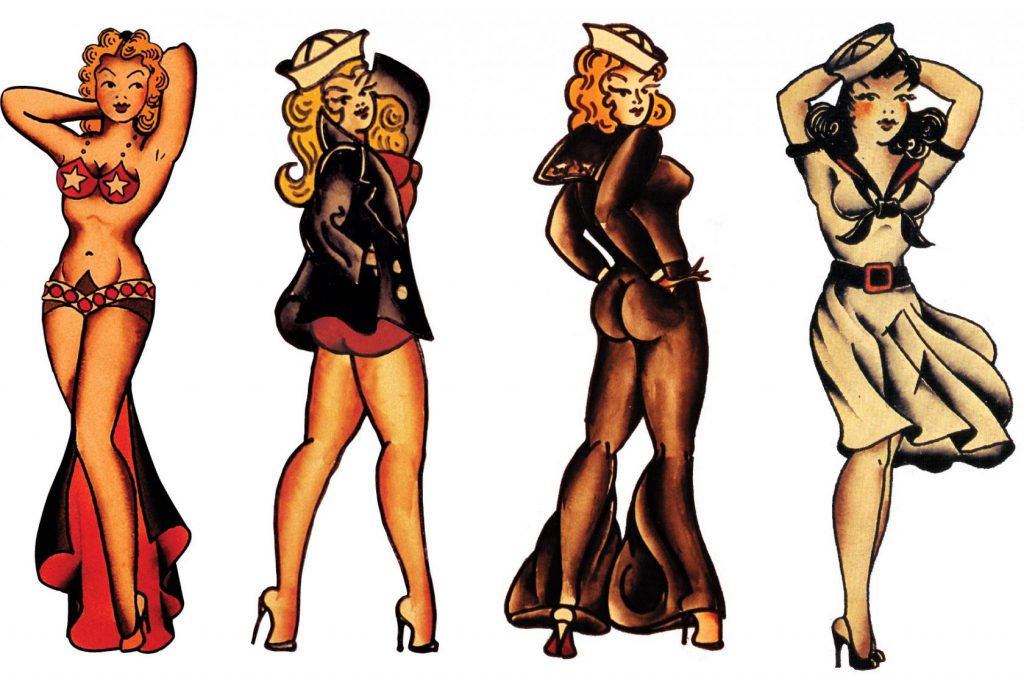The Great Tattoo Cover Up

Pictured above is Popeye the Sailor Man, the iconic cartoon character. He debuted in 1929 and, within a few years, developed the familiar features you see above — the sailor uniform, the corncob pipe, a single good eye, the comically overdeveloped forearm muscles, and of course, the can of spinach that gives him super-strength. There’s probably nothing surprising about the picture above.
And that includes Popeye’s tattoo. Each of his forearms — only one is shown above, but take my word for it, there’s one on both — is adorned with an anchor tattoo. It’s easy enough to gloss over — in fact, if you look at the current version of the Wikipedia for Popeye, you’ll see no mention of it at all. Sailor tattoos are so common that Popeye’s is reasonably considered the status quo.
That’s been the case for centuries. While the original reason that sailors get tattoos isn’t quite clear (and for our purposes, not all that important to the story), for sailors, they’ve become a tradition — and a secret language. In the 1930s, a retired enlisted sailor in Hawaii named Norman Collins became the go-to artist for sailors looking for some ink. Over the years, he developed more than a dozen designs that became touchpoints for sailor culture and became known as “Sailor Jerry” far and wide. As described on a website dedicated to Sailor Jerry’s legacy outlines, many sailors choose art because the designs have “certain common meanings” regardless of whose arm (or wherever) they’re on. Images of swallows signified that the sailor has traveled more than 5,000 miles — the swallow travels long distances to find its way home, much like the well-traveled seaman. The anchors symbolize stability, which, per the site, “is why you’ll often see anchor tattoos emblazoned with ‘Mom’ or the name of a sailor’s sweetheart.” A dragon symbolizes that the sailor visited Japan on a voyage, a turtle may mean that he crossed the Equator, etc.
Of, of course, there are the pin-up girls. These scantily-clad-at-best illustrations, as the Sailor Jerry website describes, “represent the ideal and extremes of femininity — from maidenly perfection to vixen-ish temptation.” And that was the point: “the woman inked on a sailor’s arm would be the only feminine form he would see for months.” As seen below, they were intentionally risque, as a result.

Provocative, to say the least — but at least they’re clothed. And that’s intentional. When Sailor Jerry got his start, U.S. Navy regulations required as much. In or around 1909, the government issued regulations that barred men from enlisting in the Navy if they had naked women tattooed on them. But the regulations gave would-be sailors a chance to address — or, rather, dress — the situation. Per the regs, if “indecent or obscene tattooing is cause for rejection, the applicant should be given an opportunity to alter the design, in which event he may, if otherwise qualified, be accepted.”
At first, this wasn’t an issue — there were plenty of men willing to serve who didn’t have naked women depicted on their arms. But after Pearl Harbor, that changed. Young men from coast to coast wanted to join the military and fight back against Japan and the Nazis, and many had body art that precluded them from joining the Navy. The result: a booming economy for tattoo artists. Collectors Weekly explains:
During the ’40s, this passage was a godsend for tattoo artists, as young men scrambled to censor their bodily markings so they could enlist. “It’s been just like old-home week around here since Pearl Harbor,” said Charlie Wagner, the famous New York tattooist. “Could you imagine how a store clerk would feel in a town where everybody’s clothes wore out at the same time? That’s how I’ve been feeling. For going on 50 years, I’ve been turning out tattooed ladies, most of them naked, and now all I do is cover them up.”
Business was so good that artists such as Wagner weren’t able to keep up with demand — at least, not if they wanted to maintain acceptable health and safety standards. Wagner and others cut corners when it came to cleaning their needles, and at one point, the New York City government stepped in. Wagner, per the Tattoo Archive, “told the judge he was doing ‘essential war work,’ tattooing clothes on naked women,” and the judge — perhaps surprisingly — agreed. He let Wagner off with a $10 fine (about $150-200 today).
Bonus fact: Wagner died in 1953 at age 78, but had he survived for a few more decades, he would have been out of work — or perhaps, a scofflaw. As the New York Times reported, “tattooing was banned in [New York City] from 1964 to 1997” because of “the danger of hepatitis from unsanitary needles and the temptation of young people to get markings and then, a city councilman said, ‘regretting it the rest of their lives.'” Many tattoo artists still operated in the shadows anyway, of course, and ultimately, the City changed the law.
From the Archives: Inked Red Handed: The problem with literally recording your deeds on your body? If it’s a crime scene, it can be used against you.
